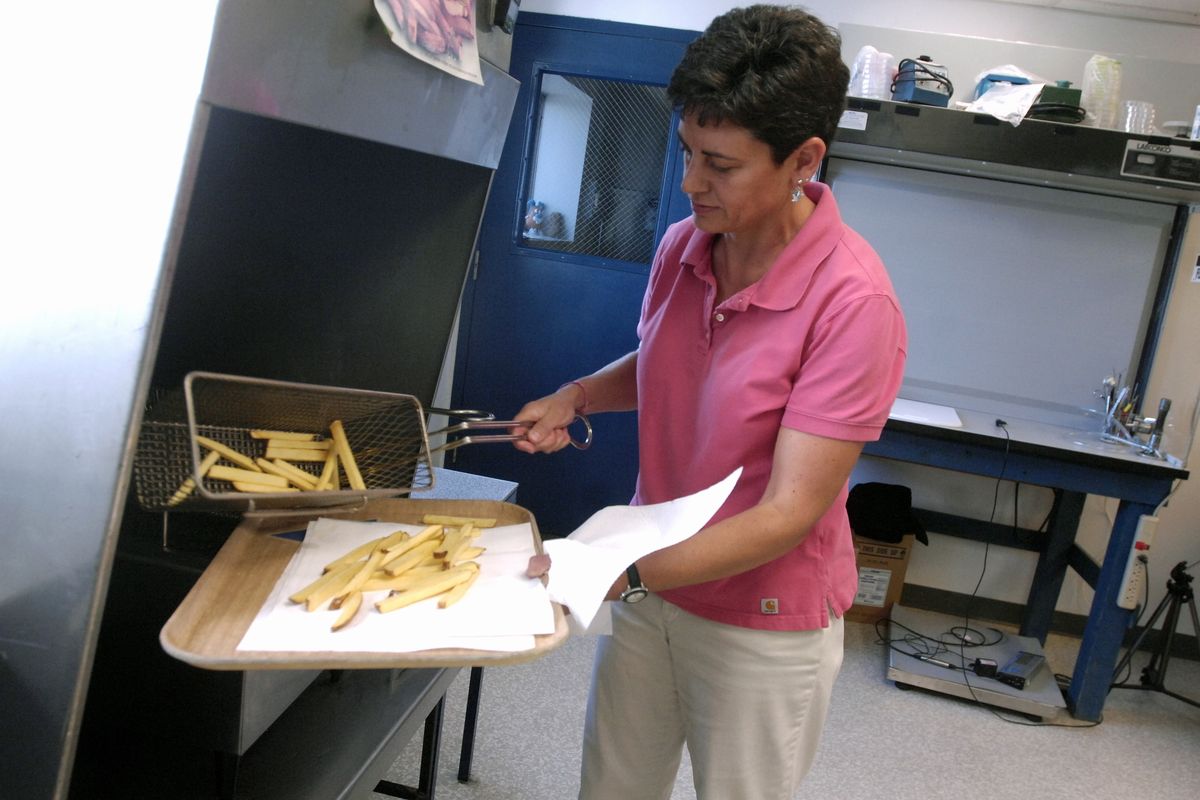Shooting for the Golden Arches
McDonald’s fries shape search for perfect spud

KIMBERLY, Idaho – From the fields of Idaho to tasting rooms in suburban Chicago, potato farmers, researchers and industry representatives are in the midst of an elusive hunt: finding a new spud for McDonald’s french fries.
Seven years have passed since the fast-food giant last added a new U.S. potato variety to three previously approved for its golden fries, something that both irks and motivates potato researchers who hope their progeny will be next.
Because McDonald’s buys more than 3 billion pounds of potatoes annually across the globe, it has the power to dictate whether a variety sprouts or winds up in the less-lucrative supermarket freezer’s crinkle-cut bin – or worse yet, banished to become dehydrated taters.
“It’s a card game where McDonald’s holds nine-tenths of the cards,” said Jeanne Debons, the Potato Variety Management Institute’s director.
The institute was established in 2005 by the Idaho, Oregon and Washington potato commissions to handle licensing and royalties from new potatoes developed at universities and federal research facilities in the three states.
An unwritten ambition: to get new potato varieties looked at by McDonald’s.
The company still relies on the Russet Burbank for many of its fries, even though this 130-year-old variety takes an eternity to mature, gulps water and falls victim to rots and other diseases, meaning farmers must douse it in chemicals. Socially conscious investors want McDonald’s to help cut pesticides to protect the environment and farmworker health.
Still, coming up with a spud stud is no mean feat: One of the last varieties McDonald’s tested, the Premier Russet, has a pedigree that on paper resembles the lineage of a thoroughbred race horse, with ancestors like the buff-skinned Penobscot of Maine. The company decided it was an also-ran.
“It has a smaller starch cell,” said Mitch Smith, McDonald’s agricultural products director. “You get a smoother texture, it does affect the way it eats.”
Allan French, a globe-trotting J.R. Simplot Co. manager who oversees potato varieties that feed the Boise-based company’s sprawling fry-processing empire stretching from Idaho to China, said a replacement to the Russet Burbank has been elusive.
Coming up with a reliable new variety takes years. The Premier Russet emerged from the breeder’s greenhouse in the early 1990s, but wasn’t released for commercial growers until 2006. Along the way, it underwent storage trials at facilities near the tiny farming town of Kimberly.
Here, University of Idaho researchers stack experimental varieties in refrigerated stalls, testing everything from sprout resistance to shrinkage. And in the test kitchen next door, storage scientist Tina Brandt fries up new varieties, to see how they stack up to Russet Burbanks, which tend to develop unsightly dark splotches that crop up on fry ends.
These days, however, taste, texture and golden-brown appearance aren’t everything.
In March, three activist investor groups won an agreement from McDonald’s to promote best practices to cut pesticide use by its American potato suppliers.
So far, the groups say the company is doing a “great job” adhering to its commitments.